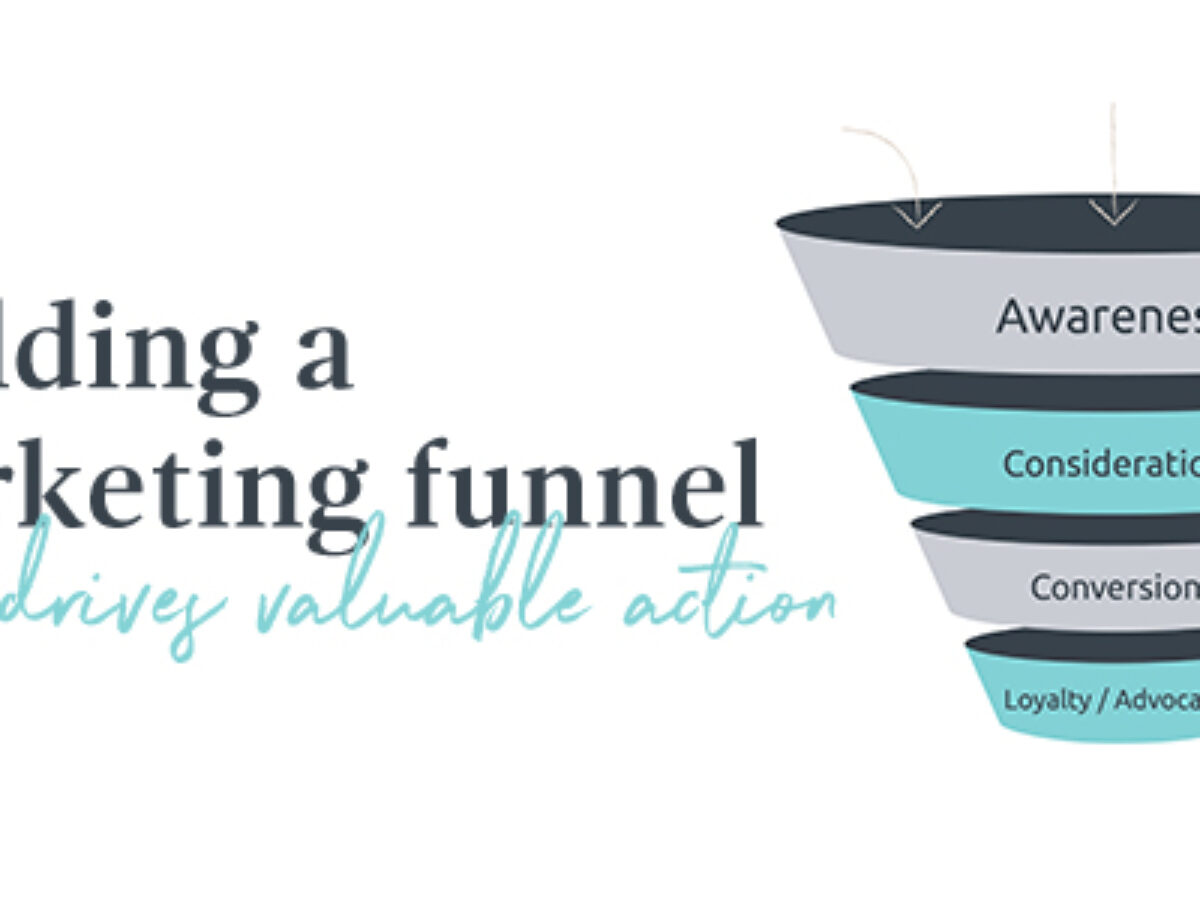Building a marketing funnel that drives valuable action

ADVERTISING FEATURE
By PIER Marketing
A marketing funnel is commonly known as the process of converting a visitor or browser into a paying, loyal customer – easy, right? Not so much. The marketing funnel is a widely used and respected gold-standard inclusion in any thorough marketing strategy. It’s a sophisticated resource that requires persistent effort and close attention to achieve successful return on investment and profit. Let us explain.
There are four main stages of a marketing funnel – awareness, consideration, conversion and loyalty / advocacy. In this article we have a closer look at each stage including how you can build a marketing funnel that drives consistent, valuable action for your business.
Marketing funnel stage one – awareness
The art of getting in front of your target audience’s eyes to introduce your brand and raise awareness of your product or service. *On average, it takes five to seven impressions for someone to remember your brand, likely more with the amount of additional digital content people have consumed in 2020 and 2021 during Covid.
Realistically, it’s highly unlikely a consumer will buy from you after the first interaction with your brand. Activity in this stage of the marketing funnel should aim to build brand impressions amongst people in your target audience to reach seven (or more) impressions.
Pop your consumer hat on – imagine walking past a shop / seeing a billboard / scrolling past an Instagram ad, how often you would make an instant purchase in that situation? Consumers usually need a little more time to become aware of your brand, think things over and do their research – but activities undertaken in the first stage of the marketing funnel can help plant a very important seed.
What does awareness activity look like?
- Search engine optimisation (SEO), social media, online advertising, email capture pop ups, award entries, public relations (PR), events, exhibitions, billboards or signs, radio and print advertising.
Tip – the goal of awareness activity is essentially to push traffic to your website, so make sure you have a remarketing code embedded in the back end of your site to capture website users in a remarketing audience.
Marketing funnel stage two – consideration
The aim here is to build trust with your consumers by effectively communicating the value of your brand and product or service. As we know from, brand equity comprises the way that consumers feel about and interact with your brand – including whether they recognise and trust you and how much they’re willing to pay for what you’re offering.
Creating content to build consumer trust requires a considerable amount of time and effort to put together, but it’s vital to funnel consumers through to the next stage and to strengthen your brand’s equity. It conveys your expertise and knowledge, and helps you become a valuable and reliable source of information.
Grab that consumer hat again – you visit a website and “subscribe” to its e-newsletter so you can learn more about the brand (and maybe get a cheeky 10% off or free shipping code). The e-newsletter arrives in your inbox containing some interesting / thoughtful / helpful info, bolstering your perception of the brand.
What does consideration activity look like?
- Electronic direct mail (eDM), social media, free no-obligation trials, webinars, videos, demonstrations, case studies, blogs and whitepapers.
Marketing funnel stage three – conversion
Your efforts from activity in stages one and two now comes to fruition where you can expect to see consumers purchase from you. Here’s what we know about the conversion stage – the initial cost of acquiring a new customer is often relatively high but return on investment (ROI) over the lifetime of that customer is where the magic lies. In fact, most businesses will not see a profit until a customer makes multiple purchases (this depends on the cost of acquisition and the cost of your product or service).
Cue consumer hat – you’ve now shifted from awareness of the brand to familiarity, and then you see a Facebook ad offering a special promotion on the exact product or service you’ve been wanting. You’re immediately inspired to make a purchase or enquiry.
What does conversion activity look like?
- Remarketing through highly targeted online ads, electronic direct mail (eDM) drip campaigns, testimonials and special promotions.
Marketing funnel stage four – loyalty and advocacy
The cost of repeat purchases (loyalty) is extremely low, while advocacy (referrals) costs you nothing at all. You’ve put time and budget into acquiring new customers throughout stages one, two and three – now is the phase to keep those customers engaged, purchasing and referring you to their networks. This is more commonly known as customer retention.
Ok, consumer hat time – imagine an occasion that you were treated to amazing service / the product came packaged beautifully or arrived much quicker than expected and how it made you want to write a good review, tell your friends and purchase again from this business.
What does loyalty and advocacy activity look like?
- Exceptional customer service (we can’t emphasise this enough), referral promotional codes, loyalty programs, repeat purchase offers, customer events, newsletters and gifts.
Where to next?
There are many different moving parts in a marketing funnel. To start, a considered strategic plan is imperative to ensure you have a clear roadmap outlining objectives, target audience, key messages, channels, key performance indicators (KPIs), tactics, activity and budget.
It’s key to understand the marketing funnel is one continuous stream of integrated activity that requires close monitoring and fine-tuning, and it takes time to gather traction and see success. You can’t expect to achieve successful ROI, loyalty and advocacy by cherry-picking activity and only implementing part of the plan. You must be willing to play the long game.
Have confidence in the thinking and logic behind your strategy and trust the funnel process. It’s a tried-and-true method! Success won’t happen overnight – it comes with consistent effort and activity, month in, month out.
*https://www.smallbizgenius.net/by-the-numbers/branding-statistics/#gref
You can contact PIER Marketing via [email protected] or (03) 5975 3742
Subscribe to our free @AuManufacturing newsletter here.
Topics Manufacturing News
@aumanufacturing Sections
Analysis and Commentary Awards Defence Manufacturing News Podcast Technology Videos










